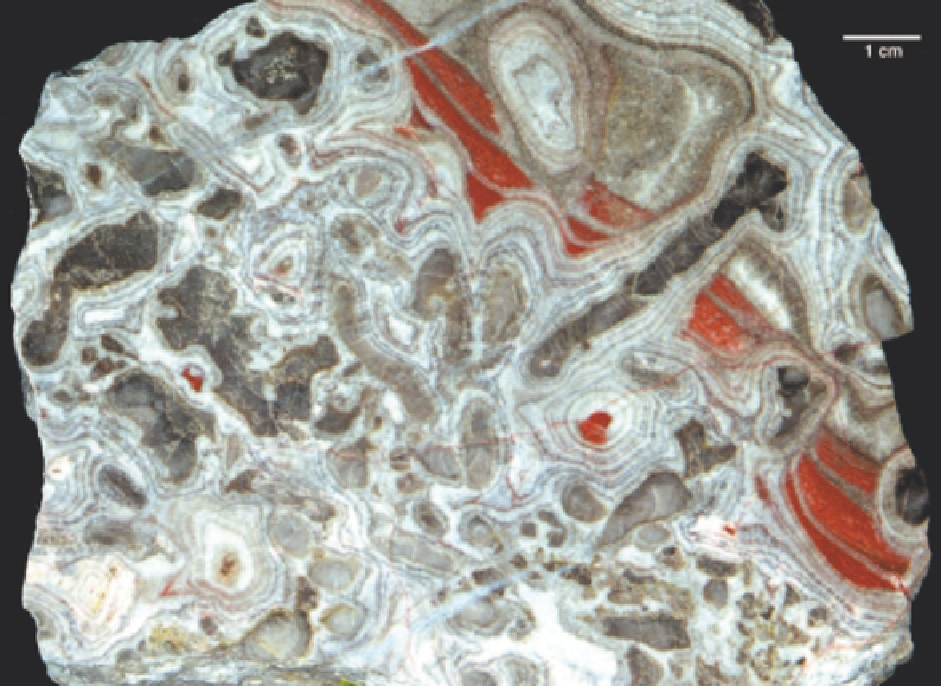Geology Reference
In-Depth Information
7.4 Pore-Filling Processes:
Cementation
in reef limestones, most of the effective porosity is con-
nected to fracture and solution pores, followed by still
preserved framework pores (Flügel 1989).
Common pore types in dolomites are intercrystal-
line pores in fine-grained early diagenetic and replace-
ment dolomites; vuggy pores caused by leaching of
evaporitic sulfate minerals in supratidal areas; moldic
pores originating from leaching of aragonite and cal-
cite particles subsequent to the matrix dolomitization
of intertidal and shallow subtidal dolomites; and inter-
particle pores due to selective solution of grains.
Obvious signs of the effect of diagenesis are pore-fill-
ing cements as seen in thin sections of carbonate rocks
(Fig. 7.7). Cement is a chemical precipitate from solu-
tion; it grows in pores, and requires supersaturation of
the pore fluid with respect to the cement mineral. Ce-
ment is distinct from neomorphic spar, which is an in-
situ replacement of calcium carbonate in the solid state.
Fig. 7.7.
Carbonate cements in Devonian fore-reef limestones.
Carbonate cements are essential constituents of ancient reefs.
In some reefs cementation is the major factor in the formation of the reef itself and in maintaining steep reef slopes. Reef
cements appear to be particularly abundant along the seaward margins of ancient reefs as demonstrated by the cement-rich
rudstone shown here deposited on fore-reef flanks. This reef was formed on the top of a submarine volcanic swell (Schwarz
1927, Krebs 1969).
Larger clasts are reworked stromatoporoids and tabulate corals. The originally high interparticle porosity (about 40 %) is
occluded by several isopachous cement fringes consisting of large radiaxial calcite crystals characterized by undulose extinc-
tion. The conspicuous black partings are explained as organic or microbial coatings formed during interruptions of cement
growth. Petrographical and geochemical data suggest a precipitation of near-surface shallow burial Mg-calcite cements in
semi-closed systems. Major controls were the original mineralogy and fluctuating pore-water salinities and temperature
(Mirsal 1978). The red sediment is related to synsedimentary submarine volcanism (Schneider 1977). The depositional and
diagenetic sequence embraces: (1) Deposition of reworked reef builders, (2) micritization of the clasts, (3) influx of gray and
red internal sediment within large interparticle pores, (4) growth of thin fringes of submarine isopachous fibrous cement,
(5) shallow burial and periodic growth of radiaxial cements and of (6) rhombohedral calcite cement (Krebs 1969). These
limestones are famous decoration stones. Polished sample. Late Devonian (Frasnian): Wirbelau near Weilburg/Lahn, Germany.

